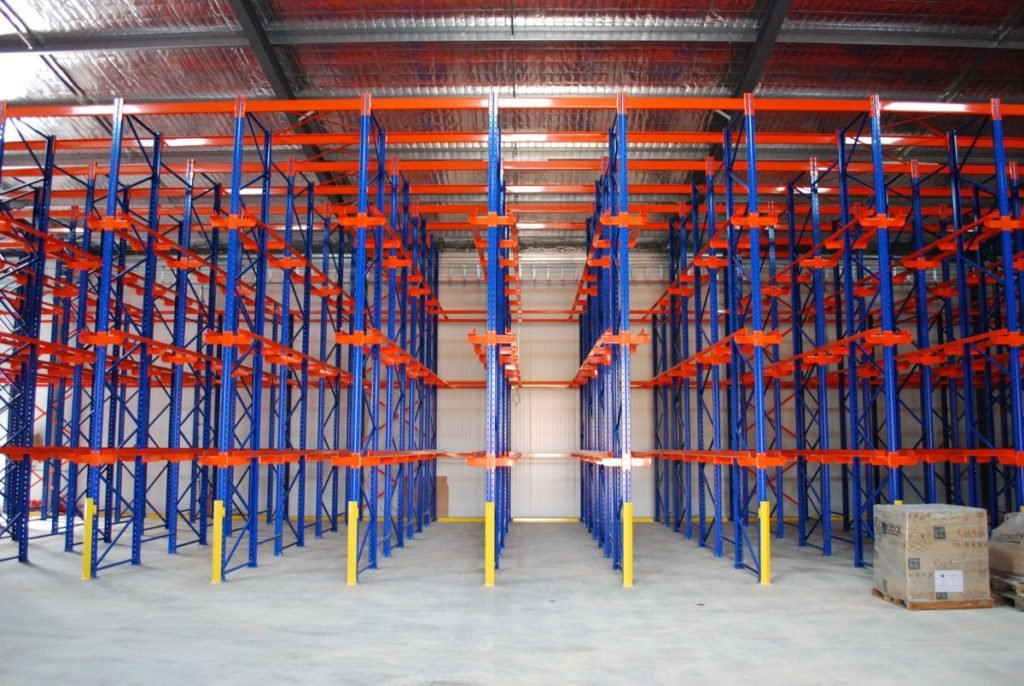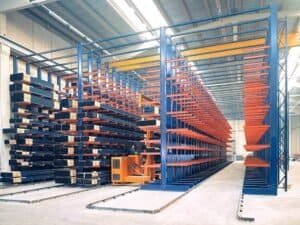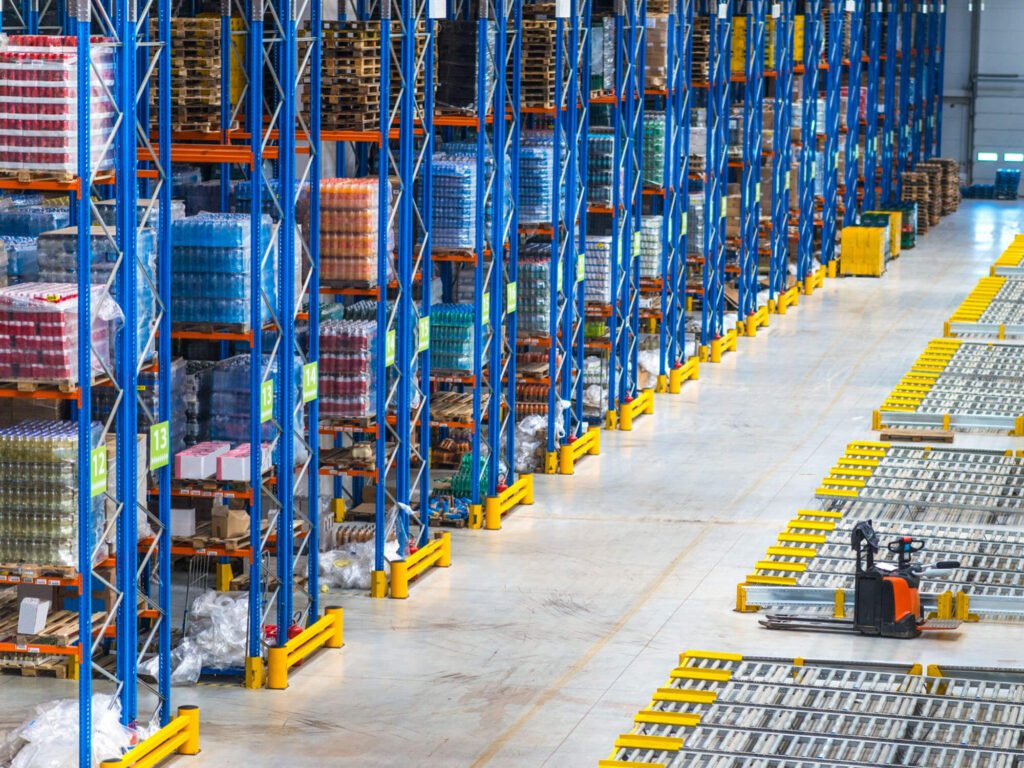When it comes to the process of warehouse management as well as logistics proper storage is always a significant factor contributing to efficient space utilization. There are two common forms of high-density storage technologies that have gained acceptance and these are drive-in racking and drive-through racking. Though these systems are similar in many aspects they have their peculiarities that predetermine them for definite tasks. The purpose of this article is to compare drive-in and drive-through racking systems and describe their advantages and disadvantages as well as the areas of application.
Basic Concepts and Definitions: Understanding Drive-In and Drive-Through Racking
To help you better understand the key difference between the two types of racking, let us first take a look at what drive-in and drive-through racking systems are all about.
Drive-In Racking: Drive-in racking is a high-density storage system that allows forklifts to enter the racking structure directly. There are vertical frames and cross members in the form of strips or rods which form channels or corridors. Pallets on the other hand are placed on the support rails and commonly a number of pallets are stacked in the depth of a lane. This racking system has only a single bay access and this implies that the forklifts actually have to back out of the lane after drop or pick operations.
Drive-Through Racking: Drive-through racking is a little like drive-in racking but has a slight variation it in that it can accommodate forklifts from one end and out from the other. This system has what is referred to as the open ends which assist in providing adequate flow through facilities on the two sides of the racking structure. Like drive-in racking, drive-through systems use vertical frames and horizontal support rails to create storage lanes.
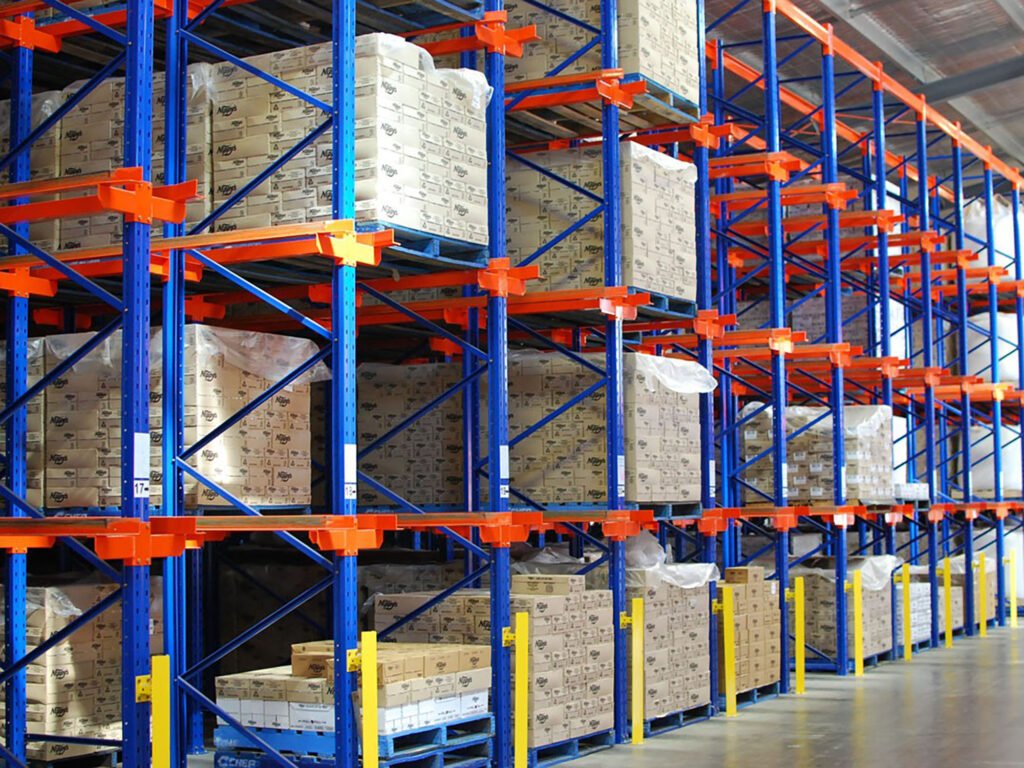
Structural Design and Components: Anatomy of High-Density Storage Systems
Drive-in and drive-through racking systems have similar use of horizontal beams and vertical frames but the structure setup varies slightly to fulfill each type’s operating functions.
Common Components:
- Uprights: Stand-reinforcing vertical steel frames, which act as columns throughout the entire racking construction.
- Support Rails: Secondary members in the form of horizontal beams connecting the vertical members in the direction of the depth of the rack so as to support the pallets.
- Entry/Exit Columns: Provisions at the opening ways to secure forklift knocks on the uprights.
- Guide Rails: Cunning barriers or channels are usually fixed on the floor and forklifts pass through the lanes.
- Pallet Supports: Wheels that are used to accommodate different sizes of pallets with other supports placed between rails.
Drive-In Racking Design: Sometimes drive-in racking systems are equipped with a backstop at the end of the lanes to avoid excessive advance of the pallets. The structure is planned in such a manner that it has the capacity to handle the forces exerted by the forklifts operating in the lanes particularly when reversing.
Drive-Through Racking Design: Drive-through racking lacks a backstop, as both ends of the lanes are open. The structure has to be more complex so as to accommodate the larger numbers as well as protect from the direct and indirect effects of the forklift operations which include ingress and egress from both directions.
Operational Efficiency: Comparing Workflow in Drive-In vs Drive-Through Racking
The operational efficiency of these systems is a crucial factor in determining their suitability for different warehouse environments.
Drive-In Racking:
- Single entry/exit point limits the flow of goods.
- Implements the last in first out (LIFO) inventory management system.
- Lanes that transport goods on pallets using forklifts require more space to turn around and start moving in reverse.
- One main disadvantage that may occur is that operations may be slightly slower sometimes, this being attributed to the fact that the robot may have to make reverse movements.
- More suitable for the warehousing of lots of units of a few products or the vendor’s stock-keeping units.
Drive-Through Racking:
- Dual entry/exit points make it possible to have a better management of the flow of product.
- Implementation of LIFO inventory as well as First In, First Out, or FIFO inventory can be supported.
- Allows a constant forward motion of the forklifts and thus cuts down the amount of time spent maneuvering.
- Less time is spent on an operation due to the fact that forward movements are accomplished without any backward movement.
- More versatile when dealing with a number of SKUs and ways of stock management.
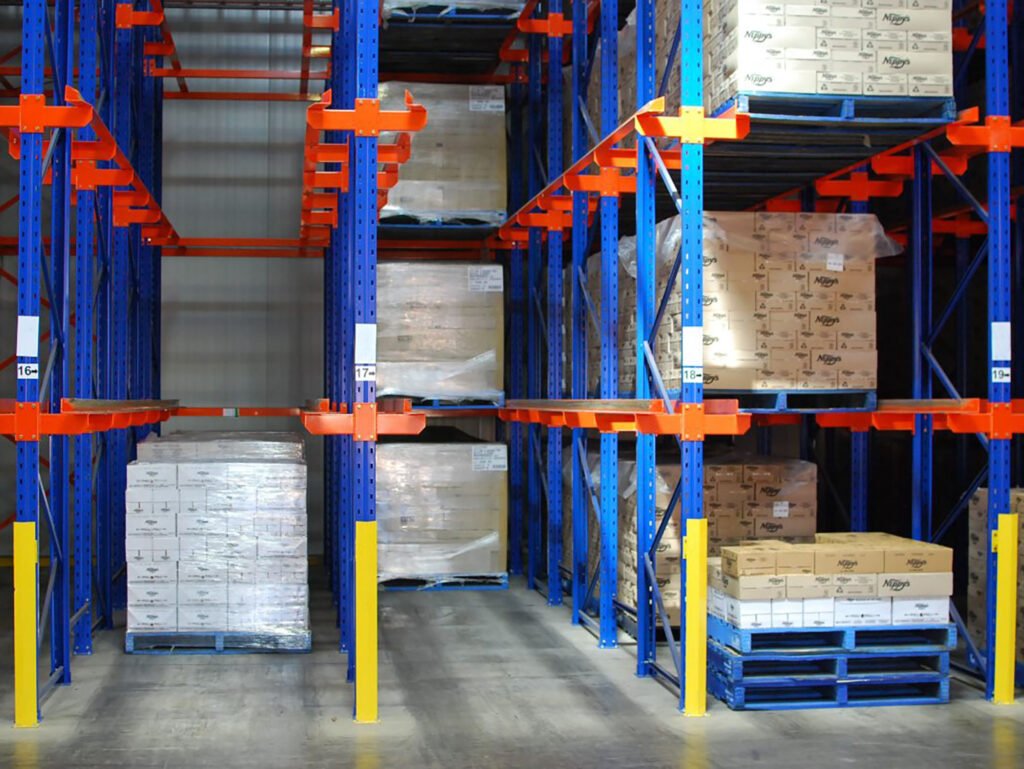
Space Utilization and Storage Density: Maximizing Warehouse Capacity
Regarding capacities, those two systems function in a similar manner, Both systems are designed to maximize storage density however, there are slight differences in the process.
Drive-In Racking:
- Usually attains a higher storage density resulting from the existence of a backstop.
- Its mix of functions in a warehouse allows using up to 85% of the total area of the storage.
- Most suitable for mass storage of products that are of a similar nature.
- Limited flexibility in terms of SKU variety within a single lane.
Drive-Through Racking:
- They possess slightly lower storage density as compared to drive-in systems because of the open-styled design.
- Occupies, on average, between 75 and 80 percent of the total space that is in the warehouse.
- Provides almost more flexibility as to the number of products to stock and the frequency of product stock turnover.
- Recommendably appropriate in warehouses arranging different SKUs with mid-level turnover frequency.
Safety Considerations: Risk Assessment in High-Density Racking Systems
There are certain safety issues that come with the implementation of the two systems since safety is very important in any warehouse operation.
Drive-In Racking:
- Less possible chances of getting into accidents as traffic moves in one direction.
- Retrieval operation exposes the racking structure to a higher risk of damage during reverse operations.
- Increased risk of damage to racking structure during reverse operations.
- t will be very difficult to navigate especially in the deeper lanes, owing to Limited visibility
Drive-Through Racking:
- Potential for increased collision risk due to bi-directional traffic.
- Reduced chances of racking structure damaging during the normal process of storage and retrieval.
- Requires clear communication and traffic management protocols.
- Improved Viewing Direction and less collision rate as the units can only move front and back.
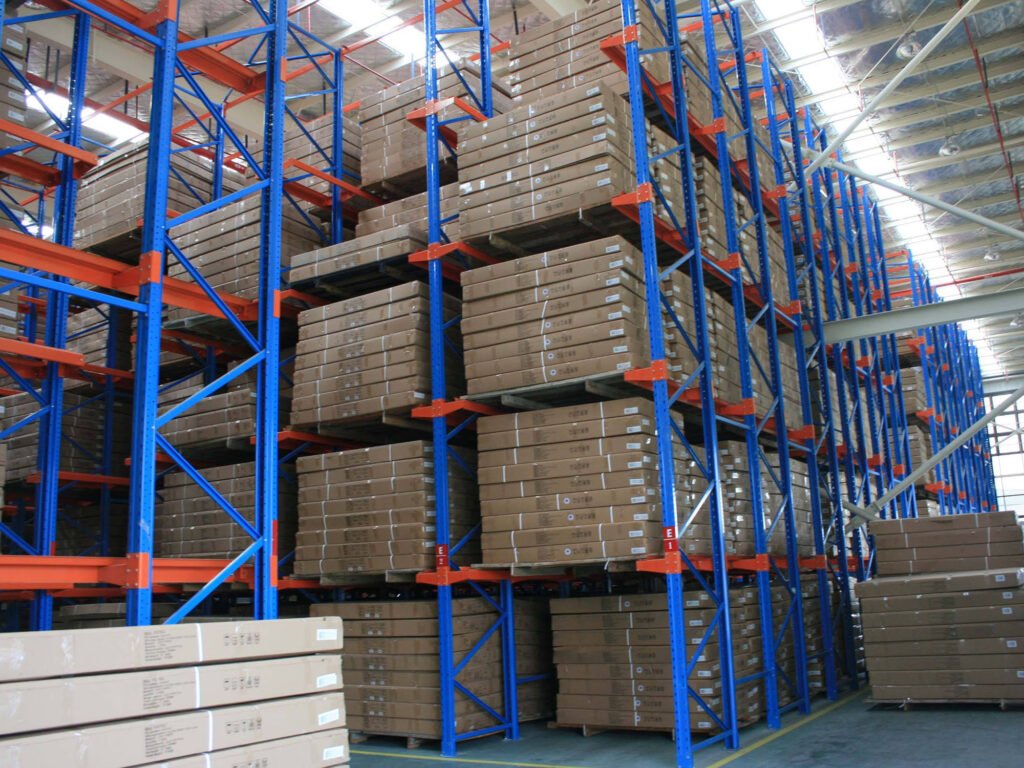
Inventory Management and Stock Rotation: LIFO vs FIFO in Racking Systems
The choice between drive-in and drive-through racking can significantly impact inventory management strategies.
Drive-In Racking:
- Primarily supports LIFO inventory management.
- Ideal for non-perishable goods or products with long shelf lives.
- Limited stock rotation capabilities, which may lead to product obsolescence in some cases.
- Best suited for bulk storage of homogeneous products with low turnover rates.
Drive-Through Racking:
- Supports both LIFO and FIFO inventory management.
- Better suited for perishable goods or products with expiration dates.
- Enables efficient stock rotation and reduces the risk of obsolescence.
- Allows for more dynamic inventory management and easier cycle counting.
Adaptability and Flexibility: Meeting Changing Warehouse Needs
One consideration differentiating these systems is the level of flexibility in adapting to the new needs of the warehouse.
Drive-In Racking:
- Less flexible in terms of reconfiguration given that it has only one entry and exit.
- Not possible to change the depth of lanes once it has been put in place.
- Not very flexible in accommodating adjustment of pallet size or variety of products.
- Most suitable for situations where the warehouse’s need for service does not fluctuate frequently and long-term storage requirements.
Drive-Through Racking:
- More adaptable to changing warehouse needs.
- t is easier to sometimes reconfigure or extend lanes where necessary.
- Is capable of handling a wider range of pallet sizes, and a diverse of products.
- Ideally applicable for what might be changing needs of warehouses.
Cost Considerations: Analyzing Investment and ROI for Racking Systems
Though both systems have the primary objective of optimizing density, there are costs which are involved.
Drive-In Racking:
- In most cases, initial costs of installation are relatively lower than those of complex systems because of relatively simple design.
- Fewer costs on maintenance due to less wear and tear from traffic.
- Potential for higher long-term costs if inventory becomes obsolete.
- The possibility of using a deep lane is that special forklifts may be needed in such lane operations.
Drive-Through Racking:
- Typically, there are higher initial installation costs that result from a more complex structure and more rigid reinforcements.
- Higher maintenance costs as compared to the initial average utilization due to high-traffic areas.
- Lower long-term inventory costs due to better stock rotation capabilities.
- The capacity is compatible with a larger number of standard forklifts.
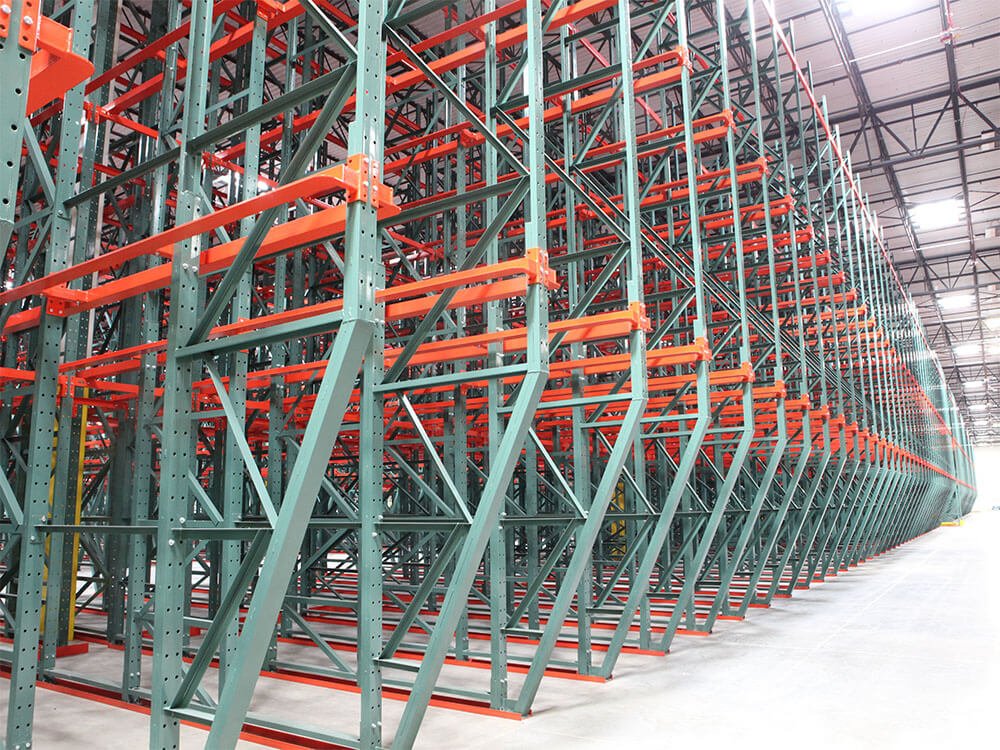
Environmental Impact and Sustainability: Green Aspects of Warehouse Racking
Today the preservation of the national and global environment in the operations of warehouses is an important consideration.
Drive-In Racking:
- Possibility of higher energy consumption specifically from forklift movements throughout the warehouse.
- There is a high likelihood of ending up with obsolete products hence increasing wastage.
- The use of vertical space trails minimizes the areas of warehousing.
Drive-Through Racking:
- Efficient forklift movements which therefore translate to low energy consumption.
- Better inventory rotation minimizes the dangers of having spoiled stocks to ensure that the products to be sold are fresh.
- Efficient use of vertical space, similar to drive-in systems.
Ideal Applications and Industry-Specific Considerations: Choosing the Right Racking System
Understanding the ideal applications for each system can help warehouse managers make informed decisions.
Drive-In Racking:
- There exist storage facilities that are classified as cold storage allowing for limited SKUs and high volumes of storage.
- Large-scale storage of raw materials in manufacturing processes.
- Temporary storage of inventories particularly during the specific time of the year in the retail stores.
- Records storage or documents or any long-term storage commodities.
Drive-Through Racking:
- Employment areas such as the Food and Beverage Industry where FIFO rotation is crucial.
- Warehouse stores with a moderate stock turnover of a large number of SKUs.
- Manufacturing facilities with just-in-time inventory systems.
- Cross-docking activities at logistics centers.
Integration with Warehouse Management Systems (WMS): Optimizing Digital Connectivity
The ability to integrate with contemporary warehouse management systems is of paramount importance to reach maximum results.
Drive-In Racking:
- Better suit due to LIFO management of inventory.
- It may necessitate special tracking techniques for the deep lane storage system.
- Sometimes there is a lack of real-time information about the inventory in deeper lanes.
Drive-Through Racking:
- Additional integration capabilities in order to implement a FIFO and LIFO approach.
- It is easier to implement real-time inventory tracking and management.
- It is more flexible for using more advanced WMS functions such as directed putaway and picking.
Future Trends and Innovations: The Evolution of Drive-In and Drive-Through Racking
Based on the development in warehouse technology, it will be expected that there will be innovation in both the drive-in and the drive-through in racking systems.
Drive-In Racking:
- Development of automated guided vehicles (AGVs) for safer deep lane operations.
- Real-time inventory tracking through sensors of deep lanes.
- Compatibility with Vertical Lift Modules in order to enhance density in the space.
Drive-Through Racking:
- Robotics picking adoption to enhance the picking methods used.
- Development of hybrid systems combining drive-through with automated storage and retrieval systems (AS/RS).
- Interconnection with smart objects for the prognostication of equipment failure and the best traffic management.
Conclusion
The drive-in and drive-through racking systems are both preferred for their density and efficiency in terms of the space, they provide but they are characterized by the operational differences. Drive-in racking is most effective in warehouses with uniform large items that need to be stored in large quantities or in cold storage units or seasonal products and general long-term storage. It is more suitable for cases where the goods are nonperishable, or where the storage areas are limited and the maximum use of the space is the ultimate objective.
Drive-through racking on the other hand has more advantages in operating methods that involve high frequency of stock turnover, disparate SKUs, or the use of both FIFO and LIFO. It is especially useful for such businesses as food and beverage, retailing and distribution, and manufacturing with actual inventories. In essence, the decisions between the two systems must be made in consultation with reference to the form and operation of the warehouse including features such as product type, the turnover rate of products, and priority operation plans among others.
| Feature | Drive-In Racking | Drive-Through Racking |
| Access Points | Single entry/exit | Dual entry/exit |
| Inventory Management | LIFO | LIFO and FIFO |
| Space Utilization | Up to 85% | 75-80% |
| Operational Efficiency | Lower (reverse movements) | Higher (continuous flow) |
| Product Mix Flexibility | Limited | Higher |
| Safety Considerations | Lower collision risk, higher structure damage risk | Higher collision risk, lower structure damage risk |
| Stock Rotation | Limited | Efficient |
| Adaptability | Less flexible | More adaptable |
| Initial Costs | Lower | Higher |
| Maintenance Costs | Lower | Potentially higher |
| Energy Efficiency | Lower | Higher |
| Ideal Applications | Cold storage, bulk storage, seasonal inventory | Food and beverage, varied SKU distribution, just-in-time manufacturing |
| WMS Integration | Simpler | More complex but feature-rich |
This table provides a quick reference for comparing the key aspects of drive-in and drive-through racking systems, summarizing the main points discussed in the article.

